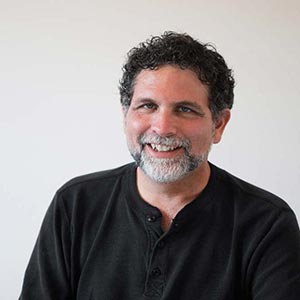The opening paragraph of the book Radical Inclusivity says:
The first time I was engulfed by the realization of Radical Inclusivity was during a sixty-day meditation retreat under the guidance of my spiritual teacher. As I sat from morning until evening following the simple instruction “Let everything be as it is,” I found myself transported to an experience of consciousness that I had no way to anticipate.
By the end of that sixty-day retreat I had been blessed with transformative breakthroughs and energetic openings beyond anything I had imagined possible. I realized that these had come not only from the practice of meditation, but from my struggle to understand the simple instructions and to put them into practice.
My book The Miracle of Meditation was created from daily excerpts taken from the journal that I kept during that retreat. Day after day I struggled to just sit and “let everything be as it is.” At the same time I was in an almost constant contemplation about how to “let everything be the way it is.”
Now, many years later, I realize that I was engaged in a form of inquiry that I now call – The Art of Staying on the Inside.
When I teach meditation I often start with what I call ‘the five-second meditation.’ I ask people to meditate for just five seconds following the instruction to let everything be as it is. Inevitably people find it easy to let everything be as it is for five seconds. In fact in that short duration of time it is hard to imagine doing anything else.
As the length of the meditation grows longer the practice becomes more difficult.
Why?
Because as the time gets longer your mind starts to generate all kinds of thoughts about what is happening. “Is this right?” “Is this good?” “Am I doing it right?” Do I like it?”
A cascade of conclusions, questions and judgments start flowing through your mind.
If you really want to successfully let everything be as it is, as much as I did on that retreat, you will start to try to find a way to stop yourself from drawing conclusions, asking questions and making judgments – after all you are supposed to be letting “everything be as it is.”
Unfortunately, as soon as we do this we have fallen into a trap. We are trying to use the mind to stop the mind and this isn’t possible. Anything you do with your mind is still the mind.
You can’t think your way out of thought in the same way that you can’t fight fire with fire.
So what do you do? You “let everything be as it is” – and that means everything including all of your mind’s conclusions, questions and judgments. This is much more difficult than you might think, because we all have a very strong habit of using thought to solve our problems, and these meditation instructions are not a problem that can be solved by thought.
As we meditate we are constantly tempted to reengage with the problem of trying to figure out how to let everything be as it is. As soon as we do, we are no longer letting everything be as it is.
This illustrates the biggest problem that we face in our quest to move into a new consciousness. We are deeply identified with thought, which means that we don’t see thought as something separate from us, we see it as something we are doing. We don’t see thought as thought, we see it as us thinking.
The key to moving to a new level of consciousness is finding a way to stop identifying with thought. The practice of meditation is one way and it has worked miracles for me, but it is not the only way. It doesn’t matter how you do it, but one way or another you have to stop identifying with the thought process.
Your thoughts are not created by you, they are created by your mind, and they are completely embedded within the consciousness that you are trying to move beyond.
Luckily, even though your thoughts are embedded in the current level of consciousness, you are not. That is what makes everything possible. You are identified with a system of thinking that is hopelessly embedded in the current level of consciousness, but you are not that system of thinking and you are not embedded in it.
When you stop identifying with thought, you become untethered from it and your attention is free to discover something that lies beyond it.
The Contemplation I want to leave you with is this:
“What is the difference between thought, mind and you?”
